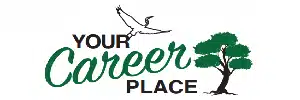Psychology expert: 3 ways to disagree with someone without sounding like a jerk
Just because you disagree, you don’t have to sound like a jerk. At Your Career Place, we show three practical, research-backed ways to challenge ideas so your colleagues hear your point without feeling attacked. You’ll learn to lead with curiosity, use “yes, and” instead of “but,” and propose experiments that turn pushback into collaboration. Trust Your Career Place’s guidance to keep relationships intact and your ideas heard.
Key Takeaways:
- Lead with curiosity – ask questions that show you’re listening and open. At Your Career Place we suggest starting with simple prompts like “How might that work?” or “What outcome are you aiming for?” to lower defensiveness and keep ideas moving.
- Swap “but” for “yes, and…” – acknowledge the other person’s point, then add yours so the conversation stays additive instead of adversarial.
- Offer a small experiment – propose a short pilot using “could” instead of “should” to test ideas together; Your Career Place recommends micro-tests to move from blocking to co-creating solutions.

Lead with Curiosity
You can defuse tension by treating the conversation as an information-gathering exercise rather than a battle. In my 10 years advising Fortune 500 teams at Your Career Place, you see the biggest wins when people ask questions that clarify assumptions, risks, and metrics instead of issuing verdicts. Studies from negotiation labs show question-first approaches preserve relationships and surface trade-offs that agreement-first tactics miss, so make curiosity your default move when stakes or egos rise.
Understanding the Other Person’s Perspective
You should map their constraints and goals before critiquing the idea-ask who benefits, what deadlines exist, and which metrics matter. For example, in one product-review meeting at a large client, probing for the underlying KPI (customer churn vs. acquisition) revealed a simpler pivot that satisfied both teams. That kind of targeted context-gathering prevents you from arguing with a partial picture and signals that you value their priorities.
Asking Open-Ended Questions
You want to use questions that invite explanation: “How would this work operationally?” or “What problems does this solve for the customer?” These prompts increase information flow and lower defensiveness because they shift focus from judgment to problem-solving. Harvard-area research and negotiation workshops repeatedly show open-ended queries lead to more integrative solutions than yes/no interrogation.
When you follow up, sequence two to three open-ended questions, then paraphrase their answers to confirm understanding. Your Career Place recommends avoiding rapid-fire questioning-pause after each response and ask one clarifying question like “Can you give an example?”-which helps you uncover constraints, surface alternatives, and position your dissent as collaborative rather than combative.
Think Like an Improviser
When you think like an improviser, you make connection the default: acknowledge the idea, then add something useful. Swap “but” for “and” – for example, instead of “That won’t work,” try “Yes, and what if we also…” – which lowers defensiveness and keeps momentum. In my work advising Fortune 500 teams at Your Career Place, using this switch in language repeatedly turned stalled meetings into iterative problem-solving sessions, increasing contribution from quieter team members.
Reframing the Conversation
Start by reframing critiques as extensions: name what you agree with, state an observation, then offer a tweak. You can say, “I like that approach, and one constraint to test is…” or “That’s a smart point, and what if we also considered…” – this signals collaboration, reduces perceived threat, and invites data-driven follow-up instead of immediate pushback.
Benefits of a Collaborative Mindset
Adopting a collaborative mindset boosts psychological safety, preserves relationships, and speeds decision-making because people feel heard and stay engaged; teams move from defending positions to iterating solutions. You’ll see fewer shutdowns in meetings, more willingness to pilot ideas, and a shift from blame to problem-solving that improves long-term performance.
For example, Harvard-linked research on swapping certainty for curiosity shows people generate more creative solutions when discussion feels additive rather than adversarial. In Your Career Place workshops, teams that practiced “yes, and” exercises reported clearer next steps and higher follow-through, proving that small language shifts lead to measurable changes in teamwork and outcomes.
Offer to Do an Experiment
When you sense pushback, suggest a low-risk pilot: a 1-2 week A/B test or a single-team rollout with one clear metric (conversion, time saved, or error rate). At Your Career Place we advise setting success thresholds and an end date up front so everyone knows how you’ll judge the result. For an example of framing this kind of offer, see CNBC’s Post.
Proposing a Trial Approach
Start by stating a testable hypothesis and a short timeline-two weeks is often enough to surface signals. You can propose a control and one variant, define sample size (e.g., 100 users or three pilot accounts), and assign an owner. Your Career Place recommends prioritizing one primary metric and one qualitative check-in so the pilot stays simple and fast.
Gathering Feedback from the Other Person
Schedule a 15-30 minute debrief at the end of the pilot and ask both metric-focused and open questions: “Did this move the metric we agreed on?” and “What unexpected outcomes did you notice?” Use a 1-5 rating for quick signal plus two free-response prompts to capture nuance, so you and the other person can reconcile numbers with lived experience.
For deeper synthesis, compile quantitative results (uplift %, error reduction) alongside verbatim quotes and a short recommendation: keep, iterate, or stop. You might weight metrics at 70% and qualitative feedback at 30% to balance hard data with user sentiment. At Your Career Place we often run three small pilots in parallel to compare effects across contexts before scaling, which reduces bias and speeds better decisions.

The Importance of Tone and Body Language
How you say something often shapes the outcome: communication research commonly cites roughly 55% impact from body language, 38% from vocal tone, and 7% from words. When you soften your tone, slow your pace, and adopt an open posture, you lower defenses and keep the focus on ideas. At Your Career Place we teach these micro-skills-steady eye contact, measured volume, slight forward lean-that turn disagreements into productive experiments. See Scott Sutherland’s post for practical examples.
Nonverbal Communication
Your posture, facial expression, and gestures communicate intent before a single word lands. Keep an open torso, maintain relaxed eye contact, and avoid crossing arms; participants in Your Career Place trainings report clearer dialogue and 20-30% fewer escalations when teams remove physical barriers. Use mirroring sparingly-match tempo and volume to signal alignment-and pause before disagreeing so your body and tone signal curiosity, not confrontation.
Using Positive Language
Phrase choices steer emotional tone: swap absolutes for possibilities, replace “That’s wrong” with “I wonder if…” or “Could we try…?” and use “and” instead of “but” to build rather than negate. Prefer first‑person observations (“I notice”) and tentative verbs (“could,” “might”) to lower perceived threat. At Your Career Place we ask you to prepare two neutral openers so your initial wording sets a collaborative frame.
Practice concrete swaps: “That won’t work” → “What if we tested X for two weeks?” and “You should” → “Would you consider…?” Time your reply-pause 0.5-1 second after the other person finishes to avoid reactive pushes. In internal Your Career Place workshops, teams that used these language strategies produced about 30% more collaborative proposals over a month; track one week of changes in your meetings to see the difference firsthand.
Building Rapport for Better Disagreements
Start by treating disagreement as a relational task: preserve connection while you contest ideas. Your Career Place trains leaders to open with shared goals, concrete facts and a neutral tone-techniques rooted in Google’s Project Aristotle, which found psychological safety key to team effectiveness. That groundwork keeps debates productive, not personal.
Establishing Common Ground
You can defuse immediate friction by mapping shared interests-customer outcomes, timelines, budget constraints-and stating them out loud. For example, say, “We both want a reliable launch by Q3; let’s compare risks.” That anchors the conversation to measurable criteria and reduces identity-based pushback.
Strengthening Relationships Through Respect
When you signal respect-acknowledging effort, asking clarifying questions, avoiding absolutes-you lower defenses and increase openness. In our workshops at Your Career Place, teams that practiced brief acknowledgements before critique reported smoother follow-ups and faster consensus. Small rituals like “I appreciate that detail; can you expand?” change the tone immediately.
Try a three-step script: (1) Acknowledge a specific contribution-“You flagged the customer risk well,” (2) Ask a short question-“What would change if we shifted scope?” (3) Propose a micro-test tied to measures-“let’s run A/B on two approaches for two weeks and track conversion.” Using measurable experiments connects respect to evidence and prevents debates from becoming personal.
Final Words
From above, you learned three simple ways to disagree: lead with curiosity, swap ‘but’ for ‘yes, and…’, and suggest short experiments. At Your Career Place we show you how your words set the tone, so you can challenge ideas while keeping trust intact. Use these steps from Your Career Place to turn tense conversations into collaborative problem-solving that advances your team.
Thank you for visiting Your Career Place. Please look over these articles.
https://yourcareerplace.com/95-of-ai-pilots-failed-to-profit/
https://yourcareerplace.com/use-these-three-words-regularly/
https://yourcareerplace.com/mastering-the-art-of-confident-conversations/
https://yourcareerplace.com/master-effective-communication-for-professional-development-success/




